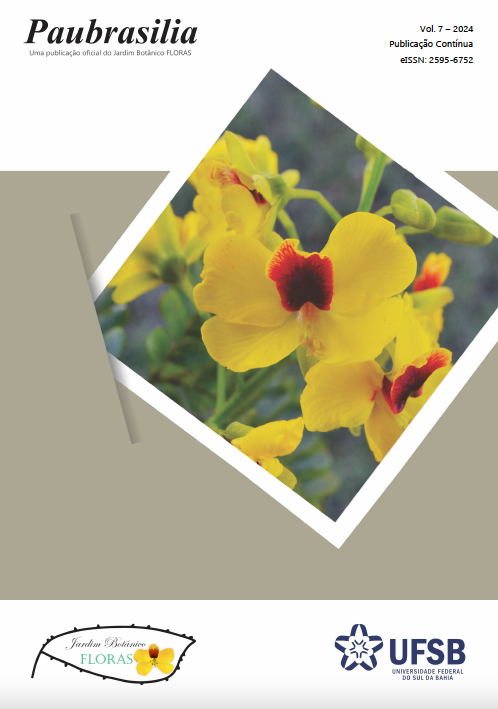Diversity and taxonomy of Melastomataceae in the Environmental Protection Area (EPA) of Bacia do Rio de Janeiro in Western Bahia
DOI:
https://doi.org/10.33447/paubrasilia.2024.e0137Keywords:
Local flora, Miconia, West of Bahia, SystematicsAbstract
Melastomataceae is the fifth most diverse family of angiosperms in Brazil, distributed over all Brazilian territory. It represents one of the families that most needs botanical studies in cerrado, where a great diversity of this group and few studies are performed. This study presents a survey and the taxonomic treatment of the family Melastomataceae in the Área de Proteção Ambiental (APA) do Rio de Janeiro, located in Barreiras and Luís Eduardo Magalhães, Bahia. By bibliographical consults, virtual surveys in herbarium, technical visits to national herbarium, and field collections, it was possible to survey the species and elaborate the taxonomic treatment. In the area, Melastomataceae is represented by 13 genera and 22 species, Miconia is the most representative genera. Among these species we highlighted Cambessedesia membranacea subsp. membranacea, Graffenrieda weddellii e Microlicia euphorbioides as new occurrences for Bahia state.
Downloads
Published
How to Cite
Conference Proceedings Volume
Section
License
Copyright (c) 2024 Najla Mara Bastos Scheidegger, Juliana Gastaldello Rando

This work is licensed under a Creative Commons Attribution 4.0 International License.
By submitting manuscripts for publication in the journal, authors expressly agree to the following terms:
1 - Authors retain copyright on their manuscript and grant the right of first publication to the journal, with the work simultaneously licensed under the Creative Commons Attribution 4.0 International License, allowing it to be shared, as long as authorship and initial publication in Paubrasilia are acknowledged, with proper indication of volume, number (if any), page number (or elocation-id), and year in which the paper was published;
2 - Authors are allowed to enter into additional contracts separately, for non-exclusive distribution of the version of the paper published in Paubrasilia (e.g., publishing in an institutional repository or as a book chapter), provided that authorship and initial publication in this journal are acknowledged, with proper indication of volume, number (if any), page number (or elocation-id), and year in which the paper was published.











